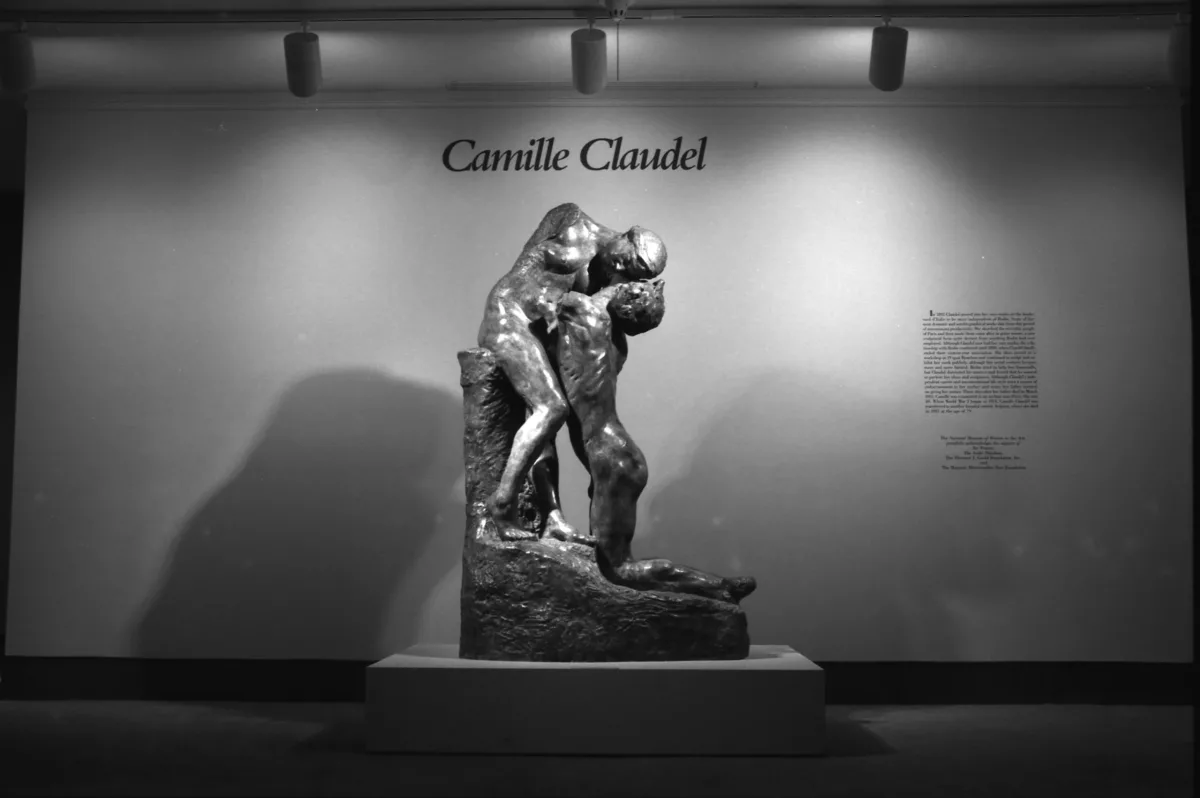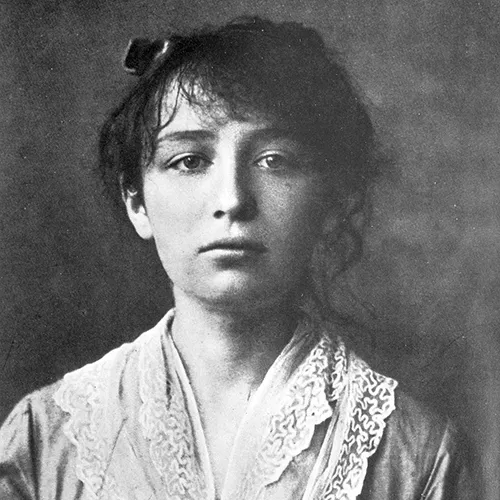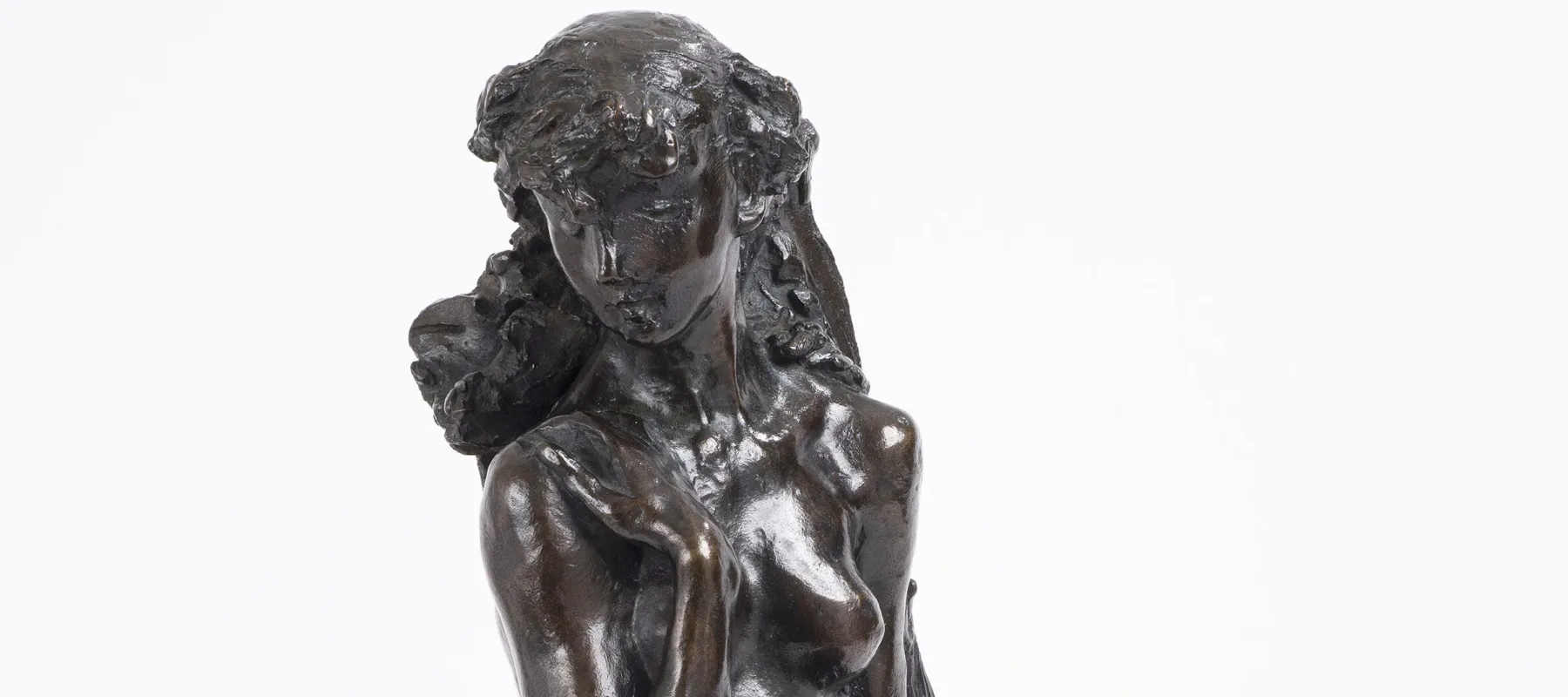The first U.S. exhibition of works by the remarkable and gifted French sculptor Camille Claudel (1864-1943) is on view at NMWA from April 25, 1988. Camille Claudel: 1864-1943 includes eighty sculpted works, ranging from a sympathetic bust of a young child, La Petite Chatelaine (The Little Mistress), to the elegantly sweeping contours of La Valse (The Waltz). Sculptures by Auguste Rodin, on loan from the Musee Rodin, will also be on view.
Claudel and Rodin were known to have had a passionate and haunting relationship as pupil/ teacher and as lovers. “Seeing these pieces side-by-side reveals the immense effect and influence these two artists had on each other’s work,” said Reine-Marie Paris, curator of the show and grand niece of Claudel. Paris, daughter of Camille’s younger brother Paul, became fascinated with Camille’s life after going back through family papers for a thesis project while in graduate school. “She had quite a dramatic life,” said Paris, “For nine years Camille and Rodin shared a studio and every other aspect of their lives together. They were obsessed with only two things: their love of each other and the love of their art.”
Then, in 1899, Camille cut all ties with Rodin, refusing even to answer his letters. “She had given him an ultimatum,” continued Paris, “but he refused to marry her and give up his “mistress” Rose Beuret. It was a tormenting end for Camille. Although she continued to be a productive artist for many years, Camille became increasingly paranoid and, in 1913, was committed to an asylum. She was interned there for forty years until she died in 1943 at the age of seventy-nine.”
Claudel’s most prolific period began in 1892 when she rented her own studio away from Rodin. She created a poignant longing within her works, evident in such examples as Les Causeuses (The Gossips) and L’Age Mur (Maturity). The strength and intensity of her works were characteristics Rodin admired in Claudel, even as their relationship continued to deteriorate. Rodin worked to stir his own emotions into his sculptures, as inspired by Claudel.
“We are very excited to be exhibiting a number of works which have never before traveled out of France,” noted Dr. Anne-Imelda M. Radice, NMWA Director. “Other pieces will be on loan from private and public collections across the country, to augment the exhibit. Collectively, they demonstrate the artist’s unusual vision and extraordinary talent,” said Radice.

Installation image of Camille Claudel: 1864-1943
The Artist,
Camille Claudel
Renowned for her ability to communicate narrative in sculpture, Camille Claudel is also remembered for her personal and professional relationship with Auguste Rodin.

